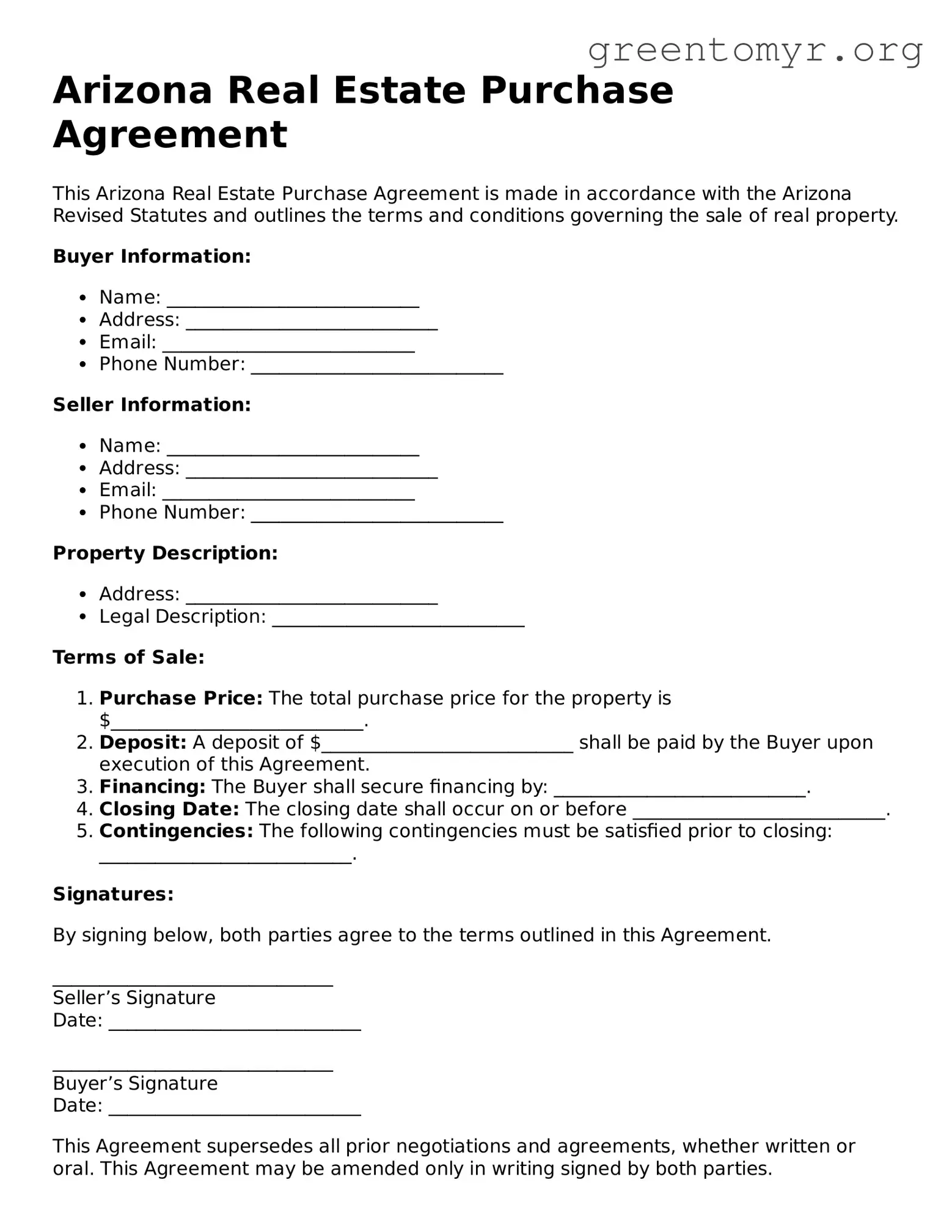Filling out the Arizona Real Estate Purchase Agreement form can be challenging. Common mistakes occur frequently and can complicate the sale. One significant error is failing to include all necessary parties. Make sure that every individual or entity involved in the transaction is properly identified. This includes all buyers and sellers. Missing a name can lead to delays or even legal disputes down the line.
Another frequent mistake is neglecting to provide accurate property details. The form must include a complete legal description of the property, along with the right address. Inaccuracies in this section can create confusion and lead to problems during closing. Buyers and sellers should double-check these details before finalizing the agreement.
Contract dates are crucial, yet often overlooked. Parties sometimes forget to specify important dates, such as the closing date or the effective date of the agreement. Such omissions can lead to misunderstandings about timelines and can hinder the transaction process. Always ensure that these dates are clearly stated.
Many individuals also underestimate the importance of the purchase price. Miswriting or failing to state the purchase price can result in significant issues. If the price is unclear, it can create confusion about the terms of the sale. Accuracy in this section is essential for the agreement's integrity.
People frequently overlook the inclusion of necessary contingencies. Properly outlining contingencies, like financing or inspection, helps protect both buyers and sellers. Not including them can expose parties to unnecessary risks. Remember, clear and defined contingencies can save effort and prevent disputes later.
Additionally, incorrect or vague terms surrounding deposits present problems. This includes failing to specify how much the deposit is and when it’s due. Clear definitions of these terms help avoid disputes about the earnest money, which is crucial in demonstrating serious intent to buy.
Not addressing the consequences of a breach of contract is another common error. Both parties should understand what happens if one fails to meet the agreement's terms. Including provisions for breach can prevent misunderstandings and establish clear expectations moving forward.
Some people also neglect to address the inclusion of personal property in the sale. Not specifying items, such as appliances or fixtures that are part of the sale, can lead to disagreements. It’s best to detail everything included in the sale within the agreement to avoid future conflict.
Another mistake involves improper signatures. Each party must sign the document for it to be valid. Sometimes, people forget to have all necessary parties sign, or they may not sign in the required places. Make sure that signatures are collected appropriately to ensure that the agreement is enforceable.
Finally, individuals may ignore the relevance of receiving legal advice. Not consulting with a real estate attorney when filling out the agreement can lead to unintentional errors. Professional insight helps clarify terms and can spot issues before they become significant problems.
